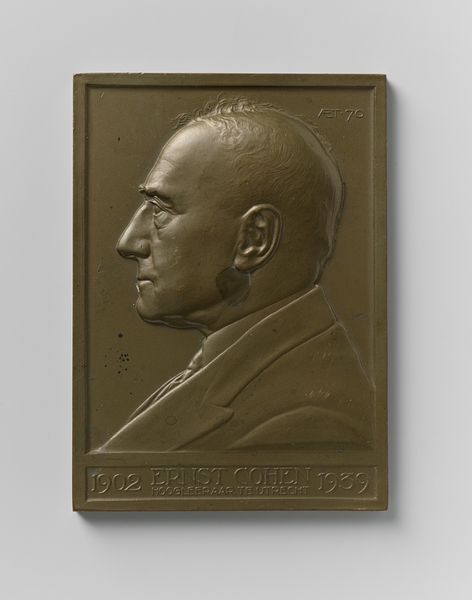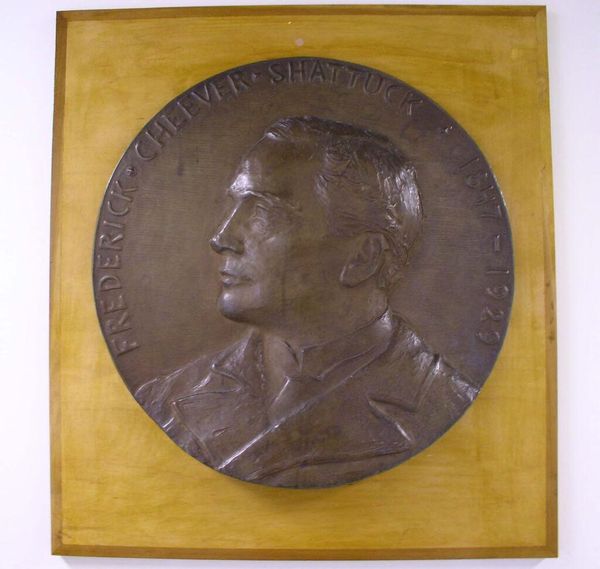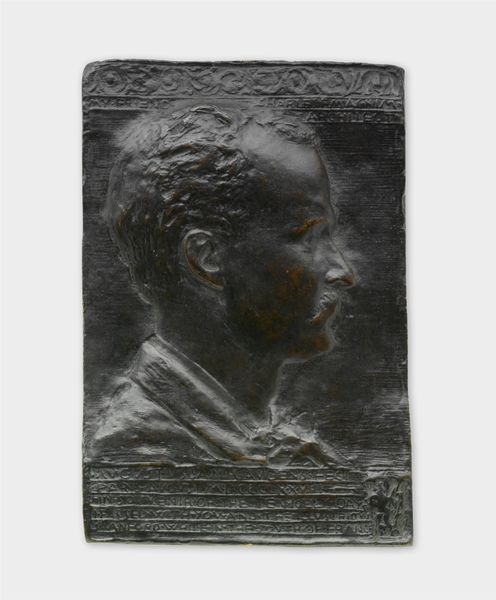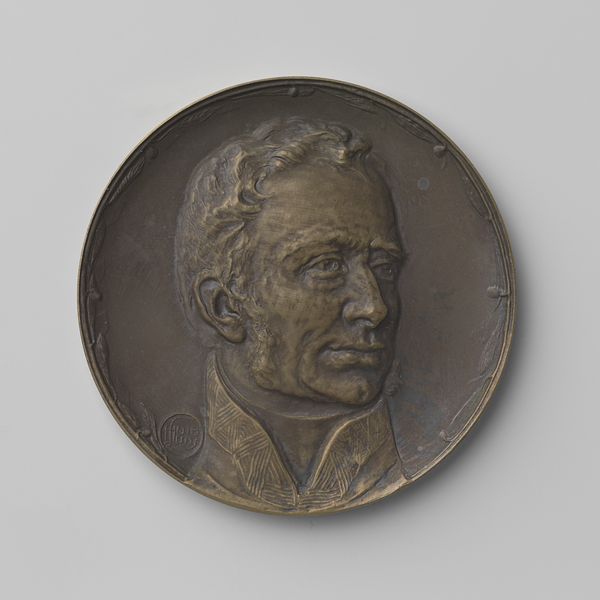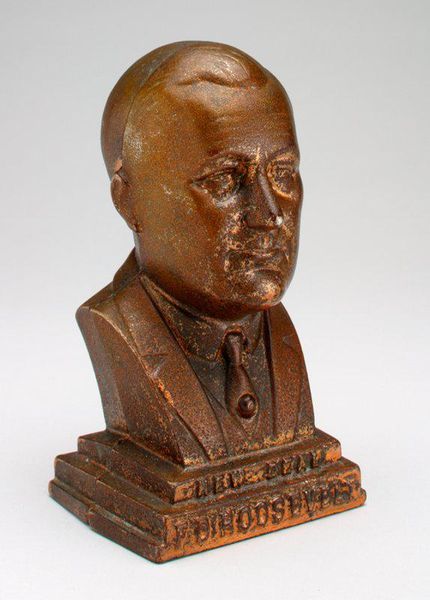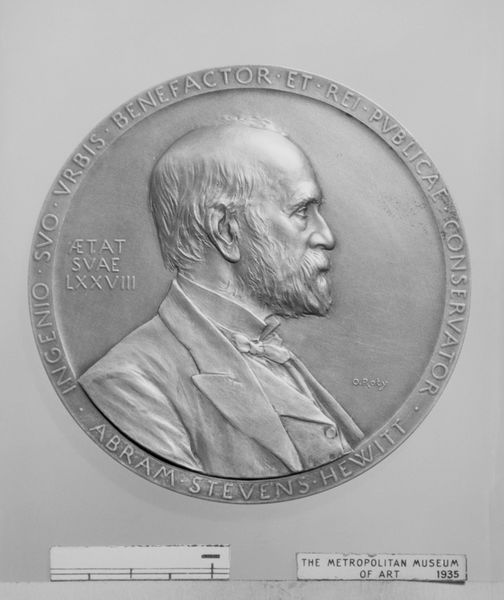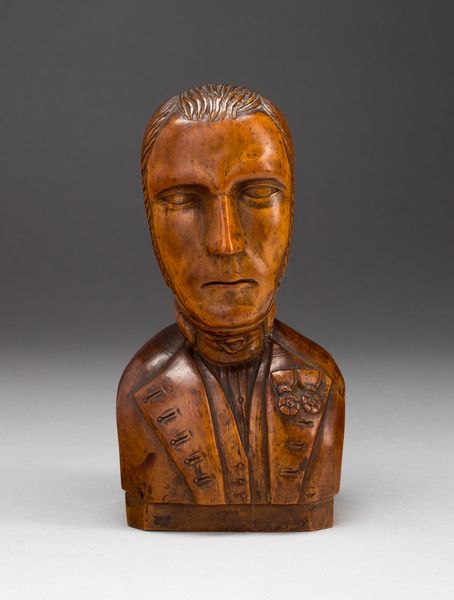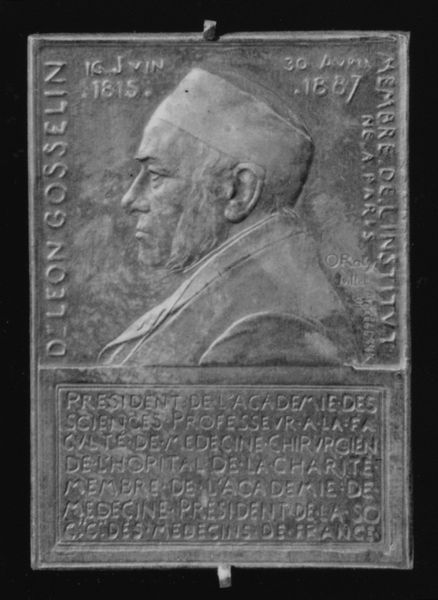
metal, bronze, sculpture
#
portrait
#
metal
#
sculpture
#
bronze
#
sculpture
#
realism
Dimensions: overall: 20 × 14.29 × 0.95 cm (7 7/8 × 5 5/8 × 3/8 in.) framed: 27.94 × 20.32 × 1.27 cm (11 × 8 × 1/2 in.)
Copyright: National Gallery of Art: CC0 1.0
Curator: The somber, weighty feel is the first thing I notice about this portrait. It has an official, almost monumental quality. Editor: Well, it *is* a portrait plaque commemorating Charles Albert Coffin, sculpted in bronze by Henry Hering in 1911. The very choice of material speaks volumes. Curator: Bronze, of course, suggesting permanence and authority, given the sitter’s high position. What was Coffin's role in society at the time? Editor: He was a prominent figure in the world of business, specifically in the rapidly expanding electrical industry. He transformed General Electric into a global powerhouse. And I can just imagine the social context in which it would have been originally displayed—likely a corporate headquarters or perhaps a university building, acting as a celebration of industry and enterprise, and also as a signal to ambitious people about which way society was heading. Curator: Indeed. It prompts reflection on the relationship between artistic production and industrial progress in the early 20th century. Was Hering often commissioned to create corporate pieces such as this? I see some fine lines in the facial structure – the tooling must have been highly refined for capturing fine textures of his moustache, wrinkles around his eyes, the material really elevates the feeling. Editor: Hering’s commissions reflected the Beaux-Arts style’s emphasis on public art—the institutional settings played a critical role in shaping public perceptions of power and influence. Bronze was considered the noblest material after marble, and ideal to show Coffin’s powerful personality, also capturing an aura of respectability, seriousness, perhaps even invincibility. Curator: Which makes this less about personal likeness and more about corporate persona—perhaps designed to project a specific image onto employees and competitors. Even today the process from sketch, clay, mould to bronze cast speaks volumes about the production of an image, in both human and capital terms. Editor: Exactly. I see the portrait as an artefact reflecting America’s aspiration for a new kind of leader – the business executive. The placement of an object like this, within the physical spaces of institutions, makes its purpose ever clear to see. Curator: Considering its material properties and historical moment, this portrait really asks questions about power, memory and legacy in industrial capitalism. Editor: Yes, seeing the object and understanding the period it was conceived is invaluable to making these connections.
Comments
No comments
Be the first to comment and join the conversation on the ultimate creative platform.
